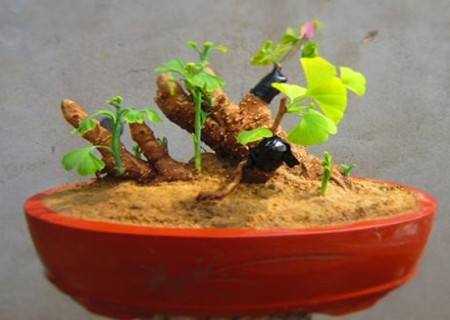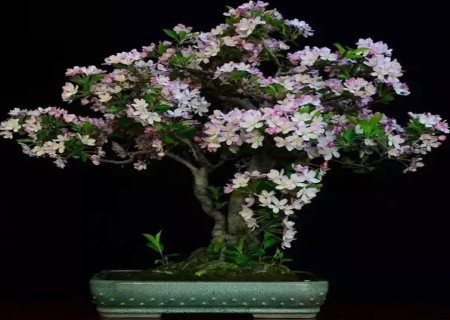The steps of hydroponic culture of Rabdosia angustifolia
Artemisia angustifolia is a creeping, water-repellent aquatic herb with round leaves and green oil. The method of hydroponic cultivation of Tongqian grass is relatively a way loved by lazy people. In recent years, hydroponic culture has become very popular. Among hydroponic plants, Codonopsis lanceolata can be said to be at the top. Because of its simple nature of being close to the people, it has become a favorite family decoration plant for many flower friends and even the general public.

Have you ever thought about keeping a few pots of copper grass in your office or at home? It can not only do medicine, but also green environment, usually office tired, nourishing eyes is also very good! So, do you know how to grow Tongqian grass and how to maintain it? Today, the editor will introduce to you this kind of hydroponic plant which is popular among the public.
Key technical points of hydroponic culture of Rabdosia angustifolia
1. Tongqian grass is suitable for extensive cultivation, as long as it is given enough sunshine and water, it can grow very fast.
2. If there is no sunshine indoors, lights can be used instead.
3. Water needs to precipitate tap water for two hours, or use it every other day.
4. A little nutrient solution can be added to the water.
5. Coppergrass generally has yellow leaves, but its withering rate is much less than its growth rate, so don't worry.
6. Chlorophyta grows in the root system of Tongqian, but it can not be cleaned.
7. as long as the water is not rotten, just add water to it and spray some water on the leaves at the same time.
Suitable time for hydroponics: spring and summer
The steps of hydroponic culture of Rabdosia angustifolia:
1. Cut several segments of stems, each with at least 3 nodes, and cut off too many leaves appropriately. After rinsing with water, put it into the container, pay attention to the position and soak the walking stem in water as much as possible (it is best to use tap water that has been kept for more than 2 days).
2. Before the new roots grow, put the container in a bright environment as much as possible, be careful not to be exposed to direct sunlight, and clean up the rotten stems and leaves at any time.
3. During the period of hydroponics, some nutrient solutions can be added to the water to maintain the needs of the plant growth period. For friends with high aesthetic requirements, you can put some crystal balls, pottery or pebbles, but not too dense, to give the root system normal growth space.
4. After about a week, the new roots begin to grow, and then the light can be increased for normal management.
5. if the leaves turn yellow, pay attention to the use of nutrient solution or spraying nitrogen-based compound fertilizer to the leaves several times a week. When water moss appears in roots and leaves, change the water immediately and clean the container, otherwise it will be disadvantageous to the plant and affect its ornamental ability. Usually, we should pay attention to whether there is enough water in the container to avoid drying up.
6, the phototaxis of copper grass is very strong, pay attention to change the orientation of the container, otherwise the leaves are easy to grow askew to one side, affecting beauty.
7. Rabdosia angustifolia grows faster, and when the plants are more dense, it can be transplanted into a larger container, or it can continue to be cultivated without permission in the original container, but pay attention to giving enough nutrients.
8. If the old leaves turn yellow, they can be cut off in time; if they grow to a certain extent, pedicels will be drawn out, and some of them can be cut off.
9. Tongqian grass is afraid of the cold. If you put it outside in winter, you can pour out all the water. If you put it in a place facing south and leeward, you can survive the winter safely, but some of the leaves will die, and the underground roots will sprout again next spring. If there is no heating in the cold areas of the north, you can make a cover with a basin, pour out the water and keep it moist. As long as the room temperature is not lower than zero, it will continue to grow in the coming year.
Time: 2019-06-09 Click:
- Prev

Seedling raising technique of twig grafting of Ginkgo biloba
Ginkgo biloba is a very ancient tree species with a history of hundreds of millions of years. Ginkgo biloba has high garden value, economic and medicinal value. Ginkgo biloba is widely planted at present, and the market supply of ginkgo seedlings is amazing every year. So how does ginkgo reproduce artificially?
- Next

How to trim the flowers?
People love Begonia, mostly for its ornamental nature, to achieve a taste and appreciation of the value of the embodiment, this more it won the flower of the gods, flower Guifei, flower noble said, symbolic significance, to a large extent, in the home placed Begonia flowers, can highlight their own taste. Begonia flowers are elegant, flowers bloom like brocade
Related
- Fuxing push coffee new agricultural production and marketing class: lack of small-scale processing plants
- Jujube rice field leisure farm deep ploughing Yilan for five years to create a space for organic food and play
- Nongyu Farm-A trial of organic papaya for brave women with advanced technology
- Four points for attention in the prevention and control of diseases and insect pests of edible fungi
- How to add nutrient solution to Edible Fungi
- Is there any good way to control edible fungus mites?
- Open Inoculation Technology of Edible Fungi
- Is there any clever way to use fertilizer for edible fungus in winter?
- What agents are used to kill the pathogens of edible fungi in the mushroom shed?
- Rapid drying of Edible Fungi

